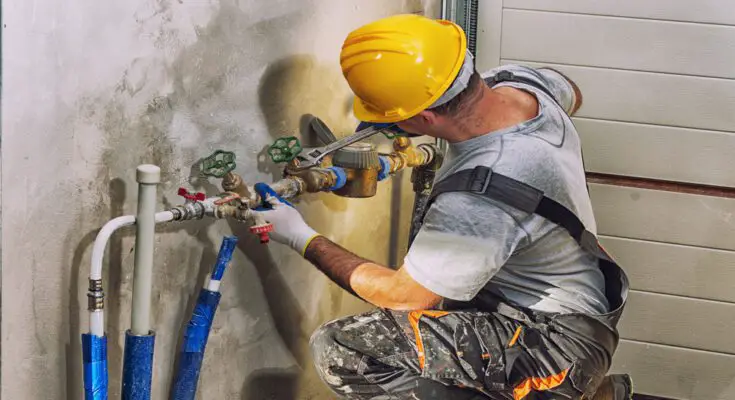When it comes to home maintenance, plumbing rarely takes center stage until something goes wrong. It’s easy to ignore the occasional drip, an oddly noisy pipe, or a toilet that doesn’t flush quite right. After all, if water still flows, it can’t be that serious… right? Unfortunately, that assumption is one of many common plumbing myths that can end up costing you thousands of dollars in repairs.
Homeowners are often guided by outdated advice or misleading online hacks. While some plumbing problems may appear minor at first glance, they often mask much larger issues behind the walls or beneath the floors. In this article, we’ll break down some of the most common plumbing misconceptions, explain why they’re dangerous, and highlight smarter ways to protect your home and your wallet.
Whether you’re in the middle of a plumbing crisis or just want to avoid one, this guide will help you separate myth from reality. And if you’re looking for professionals you can trust, sandiegoemergencyplumbing.com/ is a reliable resource to keep in your back pocket.
Myth 1: “Flushable” Wipes Are Safe for Plumbing
Let’s start with one of the most widespread myths, those so-called “flushable” wipes. Despite what the label claims, most of these wipes don’t disintegrate the way toilet paper does. They may vanish from view when flushed, but they linger in your pipes much longer than you’d expect.
Over time, wipes collect and clump with grease, hair, and other debris, forming solid blockages deep within your plumbing system. These clogs can eventually cause toilets to overflow, pipes to crack under pressure, or even trigger sewage backflow into your home. A repair job like that doesn’t come cheap, especially if the blockage damages your sewer line.
If you’re set on using these wipes, the safest bet is to toss them in the trash, not down the toilet.
Myth 2: You Don’t Need a Plumber Unless There’s a Leak
It’s tempting to believe that if you don’t see water on the floor, everything must be fine. But plumbing systems are complex, and not all problems come with obvious signs. Silent leaks, such as those within walls or under floors, can persist for weeks or months before you notice damage.
A small pinhole leak in a pipe may not be visible, but it could be causing mold growth, wood rot, or even foundation shifts behind the scenes. By the time you discover the issue, you’re not just calling a plumber, you’re calling a contractor, mold remediation team, and possibly your insurance adjuster, too.
Regular maintenance inspections from a qualified plumber can spot these issues early, helping you avoid expensive and destructive outcomes.
Myth 3: Slow Drains Will Eventually Fix Themselves
A slow-draining sink or bathtub is often brushed off as a minor annoyance. Maybe some hair or soap scum is stuck, and you hope it’ll clear on its own with a few more flushes of hot water. Sadly, that’s not how plumbing works.
In reality, slow drains are early warning signs. They indicate that your pipes are partially clogged and struggling to function properly. Ignoring the problem allows the blockage to grow, potentially leading to total obstruction or pipe damage. And if you’re relying on store-bought chemical drain cleaners, you might be doing more harm than good. Many of these products are corrosive and can weaken your pipes over time.
The smart move? Get a professional inspection when your drains start to act up. You’ll thank yourself later.
Myth 4: Noisy Pipes Are Just a “Quirk” of Older Homes
If you’ve ever been startled by loud banging noises when you turn on the faucet or flush the toilet, you’re not alone. Many people assume these sounds, often called “water hammer”, are normal, especially in older homes. But those bangs aren’t just quirks; they’re signs of plumbing distress.
Water hammer occurs when water flowing through the pipes is suddenly forced to stop or change direction, causing a shockwave. Over time, these repeated shockwaves can loosen joints, crack fittings, or even rupture pipes. It’s not something to ignore.
This is one of those cases where a small sound can foreshadow big damage. Plumbers can install air chambers or water hammer arrestors to mitigate the issue, keeping your system running smoothly and quietly.
The Cost of Believing the Wrong Advice
Believing these myths might not seem like a big deal at first, but when they lead to burst pipes, water damage, or sewage backups, the financial consequences are real. Plumbing issues can spiral quickly, especially if you’re caught off guard or rely on temporary fixes that don’t address the root cause.
Preventive care and honest information are your best defense. That includes knowing when to call in professional help, even for issues that seem small. Whether it’s a preventative inspection, a deep pipe cleaning, or leak detection, these proactive steps often cost far less than emergency repairs down the road.
Stay Informed, Stay Protected
Modern plumbing might seem invisible when it’s working right, but neglect and misinformation can quickly change that. Knowing the truth behind common plumbing myths isn’t just a matter of trivia, it’s an investment in your property’s long-term health and value.
If you suspect that something’s off with your home’s plumbing or you simply want peace of mind, don’t wait for a disaster to strike. Professional help is just a few clicks away. Feel free to explore the location on the map below to learn more about how plumbing experts can help you prevent minor concerns from turning into major problems:
Don’t let myths shape how you care for your home, rely on facts, and when in doubt, call the pros.



